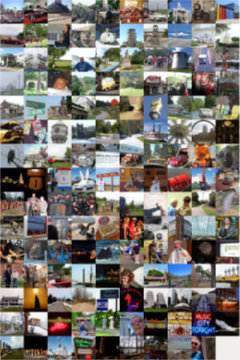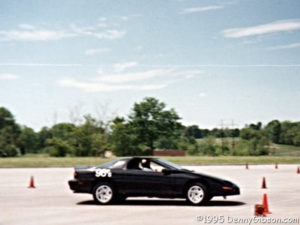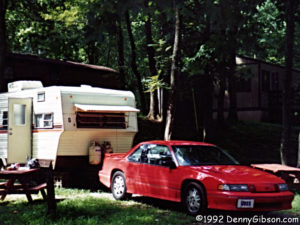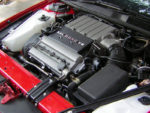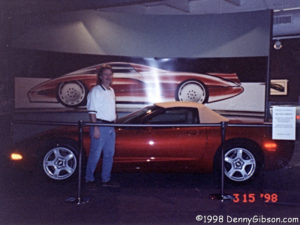 You’re a single male, you’re fifty, and your nest is empty. It’s time to order a red convertible. Right? Actually, when those conditions were first met, I ordered a silver coupe. For the first time in fourteen years, a totally new Chevrolet Corvette was introduced for 1997 and I ordered one in June. The car was initially in short supply and the dealer I chose was not a strong believer in the FIFO system of order fulfillment. As details of the next model year began to emerge with my car still unscheduled and my deposit check still uncashed, I canceled the order and went elsewhere to signup for a 1998 model.
You’re a single male, you’re fifty, and your nest is empty. It’s time to order a red convertible. Right? Actually, when those conditions were first met, I ordered a silver coupe. For the first time in fourteen years, a totally new Chevrolet Corvette was introduced for 1997 and I ordered one in June. The car was initially in short supply and the dealer I chose was not a strong believer in the FIFO system of order fulfillment. As details of the next model year began to emerge with my car still unscheduled and my deposit check still uncashed, I canceled the order and went elsewhere to signup for a 1998 model.
A convertible had been added to the lineup for ’98, and by then I’d seen enough ’97 ‘Vettes to get hooked on the Light Carmine Red Metallic color. That’s what I ordered along with the 6-speed manual, Z51 suspension, and museum delivery I’d checked off on the coupe. Thinking of starting the summer off right, I asked for mid-March delivery. As you can see by the time stamp on the museum delivery area photo, they nailed it.
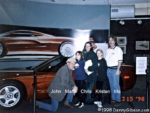 Museum delivery was not nearly as popular or as finely choreographed then as it is now. Today you are introduced to your car as it sits in a line of others scheduled for delivery on the same day, then a museum employee drives it outside before handing it over. In 1998, a day with a scheduled delivery wasn’t all that common, and a day with two was almost rare. My delivery was the second of the day, and the other car was still in place during my guided museum tour. I’d fortunately been told about this before the tour began so that I didn’t go into complete shock when it was time for the big reveal. My car was rolled in after the tour for photos and hand-off.
Museum delivery was not nearly as popular or as finely choreographed then as it is now. Today you are introduced to your car as it sits in a line of others scheduled for delivery on the same day, then a museum employee drives it outside before handing it over. In 1998, a day with a scheduled delivery wasn’t all that common, and a day with two was almost rare. My delivery was the second of the day, and the other car was still in place during my guided museum tour. I’d fortunately been told about this before the tour began so that I didn’t go into complete shock when it was time for the big reveal. My car was rolled in after the tour for photos and hand-off.
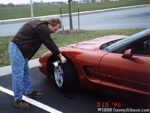 Back in the last century, new owners drove their new cars out of the museum if desired. The fellow ahead of me chose not to which is why his car was still there during my tour. I, on the other hand, wasn’t about to miss this opportunity. I’d ordered the car without so much as a test ride and the first time I was ever in a moving C5 was when I drove mine out of the museum with my girlfriend in the passenger seat. In the nearly empty lot, I “christened” the car with no name with a few drops of the champagne John had brought along before the bottle was emptied by the three adult members of the Vehicle Acquisition Team.
Back in the last century, new owners drove their new cars out of the museum if desired. The fellow ahead of me chose not to which is why his car was still there during my tour. I, on the other hand, wasn’t about to miss this opportunity. I’d ordered the car without so much as a test ride and the first time I was ever in a moving C5 was when I drove mine out of the museum with my girlfriend in the passenger seat. In the nearly empty lot, I “christened” the car with no name with a few drops of the champagne John had brought along before the bottle was emptied by the three adult members of the Vehicle Acquisition Team.
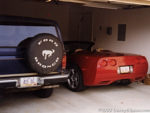 A fairly recent blog post touched on the cars I’ve used in my documented road trips, and pointed out that the My Wheels series of posts was closing in on them. This is the car that carried me on the first thirteen of those trips, and it actually has a lot to do with this website and that documentation even existing. When I started compiling a list of cars and the trips they’ve been on, I expected this car to have the highest count. I owned it longer than any other of my “road trip cars” and, even though there was another car in the stable during all of those eight and a half years, for the majority of that time the other car was not exactly road trip worthy. Of the 150 trips documented at the time of this writing, fifteen used a rental car or no car at all. Of the remaining 135, the 1998 Corvette was involved in thirty-three. That’s a respectable number but it’s not the highest. In fact, it was topped by two other cars that will eventually appear in this series.
A fairly recent blog post touched on the cars I’ve used in my documented road trips, and pointed out that the My Wheels series of posts was closing in on them. This is the car that carried me on the first thirteen of those trips, and it actually has a lot to do with this website and that documentation even existing. When I started compiling a list of cars and the trips they’ve been on, I expected this car to have the highest count. I owned it longer than any other of my “road trip cars” and, even though there was another car in the stable during all of those eight and a half years, for the majority of that time the other car was not exactly road trip worthy. Of the 150 trips documented at the time of this writing, fifteen used a rental car or no car at all. Of the remaining 135, the 1998 Corvette was involved in thirty-three. That’s a respectable number but it’s not the highest. In fact, it was topped by two other cars that will eventually appear in this series.
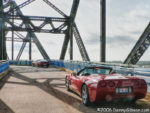
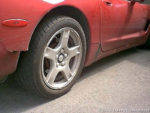 So most of this car’s story is already on this website in the journals of those thirty-three trips from my very first documented trip, when I drove it into a canyon in Arizona, to the car’s last trip, where I discovered that I had no reverse after crossing the Chain of Rocks Bridge.
So most of this car’s story is already on this website in the journals of those thirty-three trips from my very first documented trip, when I drove it into a canyon in Arizona, to the car’s last trip, where I discovered that I had no reverse after crossing the Chain of Rocks Bridge.
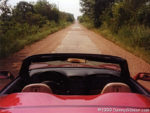 Those might sound more like low-lights than high-lights but, as John said after the canyon episode, “That’s how you get stories.” This car helped me get a lot of stories. And a lot of pictures. One picture, taken five days before that Arizona off-road excursion, has been a key part of this website ever since. It shows the Corvette on the Route 66 “sidewalk highway” near Miami, Oklahoma. With variously levels of cropping, it has constantly been the primary image on the site’s home page from the day it first appeared. It is also the basis for the site’s favicon (
Those might sound more like low-lights than high-lights but, as John said after the canyon episode, “That’s how you get stories.” This car helped me get a lot of stories. And a lot of pictures. One picture, taken five days before that Arizona off-road excursion, has been a key part of this website ever since. It shows the Corvette on the Route 66 “sidewalk highway” near Miami, Oklahoma. With variously levels of cropping, it has constantly been the primary image on the site’s home page from the day it first appeared. It is also the basis for the site’s favicon (), and it’s been in a movie.
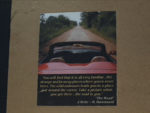 In 2005’s Elizabethtown, Kirsten Dunst surprises Orlando Bloom with a binder filled with maps, brochures, and general tips for a cross country road trip. My 1999 photo is pasted on the cover and appears on the big screen for a second or so. Guess I’m still due 14:59 of fame.
In 2005’s Elizabethtown, Kirsten Dunst surprises Orlando Bloom with a binder filled with maps, brochures, and general tips for a cross country road trip. My 1999 photo is pasted on the cover and appears on the big screen for a second or so. Guess I’m still due 14:59 of fame.
My Previous Wheels: Chapter 32 — 1986 Ford Bronco II
My Next Wheels: Chapter 34 — 2003 Pontiac Vibe

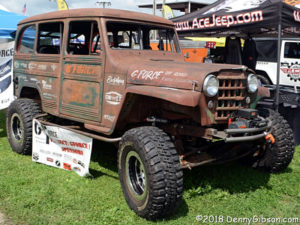

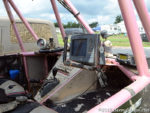
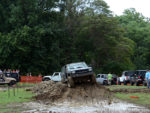

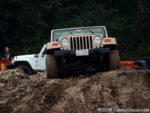

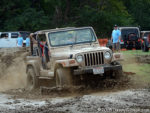


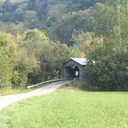



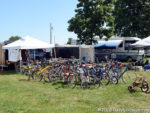
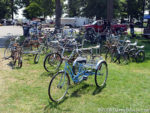

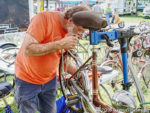
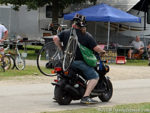
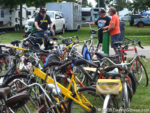
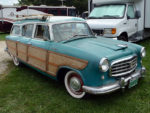
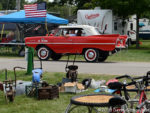

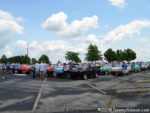
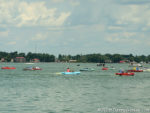
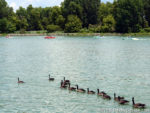
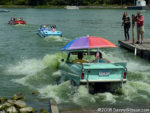
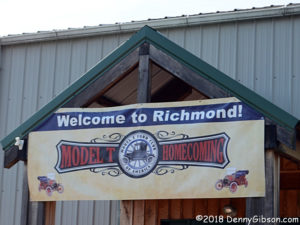
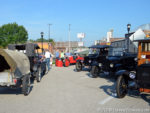


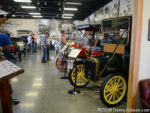
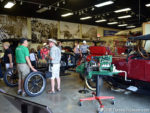

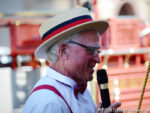
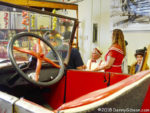

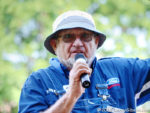

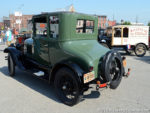
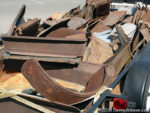
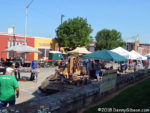
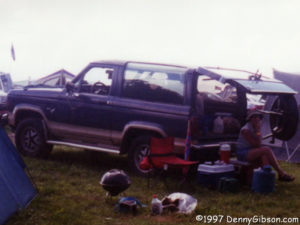
 Although a locator map wasn’t initially part of a trip journal, I did start doing it fairly early on then retrofitted one to journals already posted. A small button shaped like the contiguous US accesses the maps. For multi-day trips, the button is at the top of the cover page next to the trip title. For single day trips, it’s next to the trip title on the only page there is. The general model is a map of the route “zoomed” to fill the available space sitting atop a map of the US with a red rectangle marking the area involved.
Although a locator map wasn’t initially part of a trip journal, I did start doing it fairly early on then retrofitted one to journals already posted. A small button shaped like the contiguous US accesses the maps. For multi-day trips, the button is at the top of the cover page next to the trip title. For single day trips, it’s next to the trip title on the only page there is. The general model is a map of the route “zoomed” to fill the available space sitting atop a map of the US with a red rectangle marking the area involved.